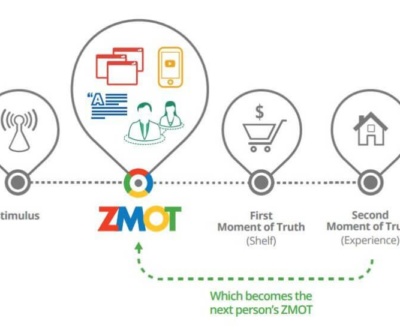“SEO has changed a lot in the last few years,” said one marketer to another every six months until the end of time. Google changes its algorithm up to 600 times annually. That is indeed a lot of change.
Many of the adjustments Google makes to its algorithm are relatively minor and don’t noticeably impact organic search for a majority of websites on the ‘net. If you think of SEO in terms of earthquakes, these changes have a magnitude of 1 or less. You can’t feel it, but it could be measured with the right tools.
About once a year Google will unleash a change that clocks in at a magnitude of 7.8, causing serious damage to those who are left completely unprepared — particularly those who haven’t fortified or reinforced their website’s structure, so to speak, since the last few major updates.
For example, if you’re still putting all your emphasis on keyword stuffing and link farming, you’ve been begging to have your online presence shaken to the ground since 2005’s Jagger update. Or maybe you closed the farm in 2005, but weren’t ready for 2010’s introduction of ‘instant previews’ and never gave a damn about your landing page design — which goes against common sense, regardless of a Google update.
Top Secret Recipe for SEO Juice Revealed: Common Sense
Jokes aside, businesses were genuinely blindsided by Google’s introduction of the instant preview feature. ‘Instant preview’ allows any user to click a magnifying glass icon and see a screenshot of the web page before they decide to click it.
“But my landing pages are a MESS!” cried business owners with misleading meta descriptions and websites that haven’t been updated since dial-up.
Common sense: if you’re selling a product or service online, make sure that your meta descriptions are accurate and that your website accurately reflects your message — even if that message and your product aren’t “popular” according keyword rankings. Put your best foot forward not just for traffic, but for traffic-to-lead conversations. You want to attract the right traffic, not the most traffic. Ranking #1 in pointless if you can’t convert traffic to leads and sales.
“Leveraging SEO and conversion optimization offer a balanced approach to your marketing strategy, addressing both sides of the equation,” writes Kissmetrics in this post about conversion optimization techniques. “Routine testing allows you to monitor your performance and inform your overall marketing strategies going forward.”
The big secret to attracting the right traffic to your website is knowing your consumer. The newly unpredictable nature of search has resulted in a return to common sense marketing or “the basics.” Today, successful marketers put more effort into creating quality content and routine testing and put far less effort into keyword and link building. No one is saying that SEO is a wasted effort, only that there is no longer one way to improve your rankings.
SEO in 2017: Experience Over Updates
With the constant changes to Google’s algorithm and Google’s increasing reliance on artificial intelligence, ranking factors are nearly impossible to understand and predict. SEO has changed so much over the last several years that marketers and business owners alike aren’t sure what is outdated or what actions could potentially damage their rankings.
The days of the formulaic “one size fits all” SEO strategy are long gone. Everyone has a different opinion about what the “best” SEO strategy is, but only you know what’s best for your business — no two scenarios are going to require the same approach. Today, marketers need to rely on experience in SEO, consumer research, and multi-channel marketing to rank in their chosen niche. Reading about the latest Google update isn’t going to cut it.
“There are hundreds of different ways to do SEO, including sitemaps, link-building, search-engine-friendly site design and do on. The best strategy for successful SEO can differ by product, by page and even by season,” says Juli Ahn, Pinterest engineer.
With this return to quality content and renewed interest in the consumer’s online habits, naturally marketers and business owners are embracing A/B split tests with increased enthusiasm. No longer just for PPC and email marketing, marketers are running A/B tests for everything from Facebook to LinkedIn to hone their social media messaging, for example. This classic marketing tactic can also be effectively applied to developing your company’s individual SEO strategy.
How to A/B Split Test for SEO
A/B split testing is the only way to learn SEO for your niche. Marketers need to combine common sense with adaptive thinking in order to gain a competitive edge in search. Simply put, this method allows you to focus on what works and avoid what doesn’t — more importantly, avoid actions that could be potentially harmful to your ranking.
“Identifying what works best for each use case helps us move fast with limited resources,” Ahn says of the testing at Pinterest. “By running a large number of experiments, we found some well-known strategies for SEO didn’t work for us, while certain tactics we weren’t confident about worked like a charm.”
If you’ve done A/B testing for other channels (paid search, email, social) this approach is vastly different and needs to be handled with more care and thought than the whimsical approach some marketers take to testing messaging.
- Don’t duplicate pages.
Unlike testing for other channels where you can create two ads, for example, and see which one performs better and make tweaks and adjustments from there, this is not something you can do with your website. Google may change its algorithm 600 times each year, but one constant is that Google does not like duplicate content and will penalize you for it.
Check out these charts that illustrate the difference between traditional and SEO A/B split testing variant groups from Moz.com:

If you choose to look beyond the issue of duplicate content, the A/B test would be defeated simply by the difference in age between the two pages, its performance, appearance in linking structures.
- Create page groups.
Identify which pages you would like to improve and how. A successful A/B test will still depend on choosing one variable to test. Select an even number of web pages from your site that are in the same hierarchy and created around the same time. For example if you have eight product pages, randomly split them into control and variant groups: four and four.
- Measure the success.
After two weeks, even small sites should see a difference in performance between their A and B groups. Organic search traffic is the widely accepted marker for SEO A/B split testing. Pairing gain or loss of search traffic with ranking results might allow you to detect success more quickly. While your reason for running the test is to determine what Google prefers, you don’t want to see your ranking improve but see your clickthrough rates plummet.
A Note on Multiple Websites and Domain Authority
Just as it wouldn’t make sense to A/B test pages of different ages, performance levels — it also doesn’t make sense to create another website for the purpose of SEO A/B split testing. More often than not, it’s not worth the risk. Before deciding to purchase another domain and create a new website for a new product or service you’d like to offer, ask yourself these two questions:
- Is this product or service an individual brand that can stand on its own and offer unique content that does not fit in with your current brand in any way shape or form?
- Does this new service or product cover an entirely different niche or industry?
If the answer is to either of these questions is “no” or if you have any hesitation at all, then create a new product or service page on your current website. This will help you establish and maintain domain authority and brand credibility. Imagine if Apple had a different domain name for each of its products or, on a smaller scale, a law office who has a multiple legal specialities. It only helps to have all of those products and, more importantly in terms of SEO, all of that industry content, under one domain.
Even with a linking structure to tie all the domains together, you run the risk of Google determining that your different sites exist solely to prop each other up in search, which is a big no-no. Since 2011, Google has taken great strides to kill link networks and that battle is still raging today.
“Search engines put more weight on links they consider to be high-quality than those seen as low-quality, which can affect rankings in [search engine results pages]. A single link from a highly trafficked, trusted and established website will provide you with more authority and trust than multiple low-quality links [from new sites with fewer external links pointing to them],” writes Heidi Smith of Marketing Mojo.
While you’re not cranking out thousands of meaningless links, the point of this warning is that Google’s algorithm is only getting smarter. If it can recognize the difference between good and bad links, it will eventually recognize that you’re creating multiple domains purely for an SEO boost. Don’t build your website on a house of cards: know the core principles of SEO, understand your consumer, create quality content, and A/B test thoughtfully and carefully to find the strategy that works best for your brand.
Visit our about page - woodleymarketing.com/about/
About us and this blog
We are a digital marketing company with a focus on helping our customers achieve great results across several key areas.
Request a free quote
We offer professional SEO services that help websites increase their organic search score drastically in order to compete for the highest rankings even when it comes to highly competitive keywords.
Subscribe to our newsletter!
Recent Posts
- Are You Still Using These Black Hat SEO Tactics? August 17, 2017
- The Biggest Ranking Factors for SEO in 2017 July 27, 2017
- Do No Harm: How to Become a Modern Monopoly July 15, 2017










Pingback: December 6, 2017 Polish Your Pitch with Data-Driven Web Design Strategies from Woodley Marketing and MOZ